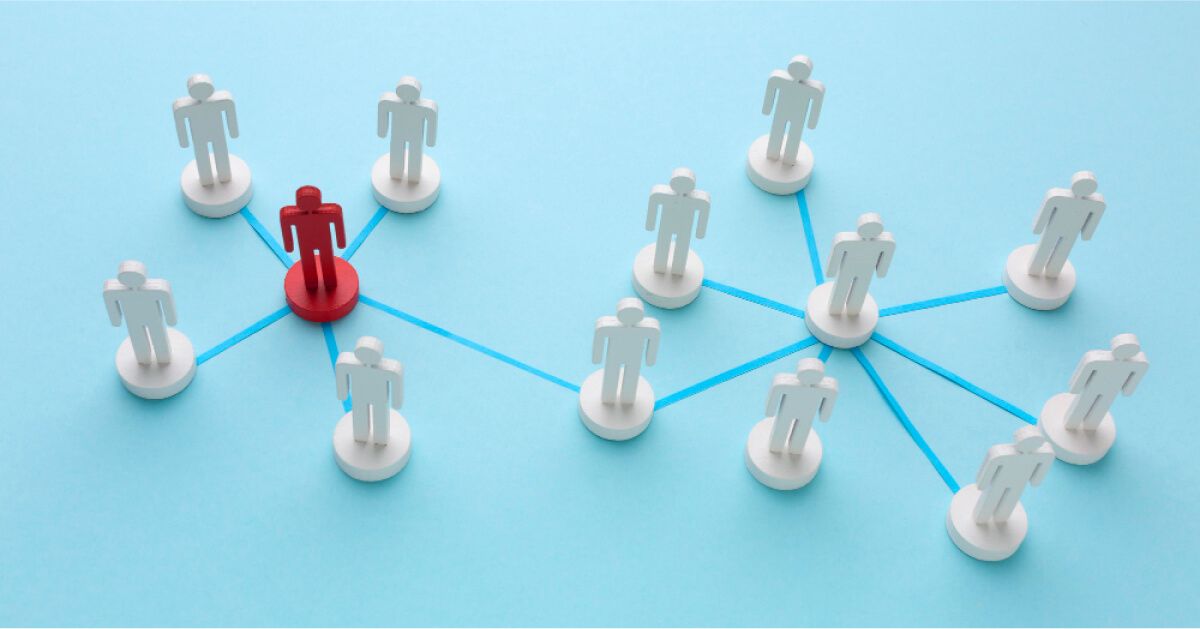How to approach frontline employee engagement as a leader: Best practices to follow in 2025

Picture a well-tended garden where each plant thrives under the right care—water, sunlight, and nutrients. Now imagine one corner of the garden is neglected, left without attention or resources. Over time, the plants there wilt, affecting the overall beauty and health of the garden. Frontline employees are much like these vital plants in an organization.
They are the foundation of customer experiences and operational success, but if their needs are ignored, disengagement begins to spread, impacting the entire company’s performance.
Frontline employees are the face of the business, interacting directly with customers, solving immediate challenges, and embodying the brand’s values.
However, their roles often come with high stress, limited recognition, and fewer opportunities for growth compared to desk based roles. When these challenges are left unaddressed, even the most motivated employees may lose their enthusiasm and connection to the organization’s goals.
Learn why frontline employee engagement matters, uncover the reasons it falters, and discover actionable strategies to support and nurture this critical workforce segment.
What is the definition of frontline employees?

Frontline employees are the everyday superheroes of the business world. They’re the friendly faces you encounter first in stores, on the phone, or at the front desk.
They interact directly with customers or clients across industries (e.g. retail, hospitality, healthcare provision, banks) and are on the "front lines" of a business, representing the organization to customers.
Besides playing a crucial role in customer satisfaction and service delivery, they’re the pulse of customer interactions, turning ordinary transactions into meaningful experiences. Frontline employees bring the essence of a brand to life, creating a vibrant and welcoming atmosphere for customers.
Why are frontline employees important?
Frontline employees aren't just important; they're the driving force behind a thriving, customer-centric business. Their work directly impacts customer satisfaction, brand perception, business outcomes and the overall success of a business.
Organizations that recognize and invest in the importance of their frontline staff are best positioned to thrive in the marketplace.
- Customer interaction: Frontline employees are often the first point of contact between a business and its customers. They play a vital role in shaping customers' perceptions of the company through their interactions, influencing customer satisfaction, loyalty, and overall experience.
- Brand representation: Frontline employees serve as ambassadors for the brand. The way they conduct themselves and handle customer interactions directly impacts the brand image and reputation. Positive experiences with frontline staff can lead to customer trust and loyalty.
- Customer satisfaction: Frontline employees directly influence customer satisfaction levels. Their ability to address customer needs, provide helpful information, and resolve issues contributes to positive experiences.
- Service delivery: In service-oriented industries, frontline employees are responsible for delivering the core product or service. Their competence, efficiency, and effectiveness are critical for meeting customer expectations and maintaining service quality.
- Problem resolution: Frontline employees often handle customer complaints and issues. Their ability to resolve problems promptly and effectively can turn a negative experience into a positive one, demonstrating the company's commitment to customer service.
- Customer feedback: Frontline employees are well-positioned to gather valuable insights from customers. They can provide feedback on customer preferences, concerns, and trends, helping the organization make informed decisions and improve its products or services.
- Customer retention: Building strong relationships with customers is essential for retention. Frontline employees who establish positive connections and understand customer needs contribute to long-term customer loyalty, reducing churn and increasing lifetime customer value.
- Competitive advantage: Excellent customer service provided by frontline employees can be a key differentiator in a competitive market. Businesses that prioritize and invest in frontline employee training and development gain a competitive advantage by delivering superior customer experiences.
Why do frontline employees become disengaged?

Frontline employees are the heartbeat of an organization, directly interacting with customers and representing the company’s values. Despite their critical role, many frontline workers struggle with disengagement due to unique challenges that often go unaddressed.
One major reason is the lack of recognition for their efforts. Frontline employees frequently deal with high-pressure situations, but when their contributions are overlooked or undervalued, their motivation can wane. Without acknowledgment, even exceptional performance can feel meaningless.
Another significant factor is insufficient communication. Frontline workers often operate in decentralized or fast-paced environments, making it harder for them to stay connected with organizational updates or share feedback. This disconnect can lead to feelings of isolation and a lack of alignment with company goals.
Limited career growth opportunities also contribute to disengagement. When employees perceive their roles as stagnant with no clear path for advancement, their enthusiasm and sense of purpose can diminish. Coupled with repetitive tasks and demanding schedules, this can lead to burnout and frustration.
Ultimately, disengagement stems from a lack of support, resources, and inclusivity. Addressing these pain points through recognition, effective communication, and development opportunities is essential to keep frontline employees motivated, satisfied, and aligned with the organization’s success.
Frontline employee engagement benefits
Frontline employee engagement yields a plethora of benefits that directly impact organizational success. Engaged frontline workers are more motivated, providing superior customer service and positively influencing customer satisfaction. Their enthusiasm creates a ripple effect, enhancing overall workplace morale and culture.
Improved engagement correlates with higher productivity and efficiency, directly contributing to operational success. Engaged frontline employees are also more likely to stay with the organization, reducing turnover costs and retaining valuable institutional knowledge.
Furthermore, their commitment fosters a positive work environment, attracting top talent and strengthening the organization's reputation.
In essence, investing in frontline employee engagement is an invaluable strategy, aligning individual success with organizational prosperity and creating a virtuous cycle of positive outcomes.
The connection between frontline engagement and customer satisfaction

Frontline employee engagement and customer satisfaction are intrinsically linked, creating a cycle where one continuously fuels the other. When frontline employees are highly engaged, they bring energy, enthusiasm, and a customer-focused mindset to their roles, directly impacting the quality of customer interactions.
Employees with access to learning resources and support from senior leaders feel a sense of purpose and ownership in their work, translating into genuine care and effort when addressing customer needs. These employees are also adept at utilizing feedback to anticipate expectations and deliver personalized solutions, fostering trust and loyalty.
The benefits of frontline engagement extend beyond individual interactions. Engaged employees are more likely to provide valuable customer insights, helping many businesses refine products and services. They also create a welcoming environment that encourages repeat business and positive word-of-mouth referrals.
On the other hand, disengaged frontline employees may lead to missed opportunities, inconsistent service, and customer dissatisfaction. Prioritizing frontline engagement is essential for driving satisfaction, enhancing customer loyalty, and maintaining a competitive edge in today’s experience-driven marketplace.
What is a frontline employee engagement model?

A frontline employee engagement model is a strategic framework designed to enhance the motivation, satisfaction, and involvement of frontline workers. It focuses on addressing the unique challenges faced by frontline employees while fostering a positive and productive work environment.
It typically involves a set of strategies, practices, and initiatives aimed at creating a positive and engaging work environment for those who directly interact with customers or clients. It contains many components, including:
Rewards & recognition
Acknowledging and celebrating the contributions of frontline employees boosts morale and reinforces their value to the organization. Simple acts of recognition foster motivation and loyalty, encouraging consistent high performance.
Training & development
Providing skill-building opportunities and career advancement opportunities empowers frontline employees to perform confidently and achieve their full potential. Continuous learning drives engagement and innovation, preparing them for future challenges.
Establishment & maintenance of communication channels
Open, two-way communication ensures that frontline employees feel heard and informed. It fosters trust and alignment with organizational goals, bridging the gap between leadership and the frontline.
Team building activities
Encouraging collaboration through team-building initiatives strengthens relationships among employees, promoting a sense of community and collective purpose. These activities also enhance teamwork, productivity, and morale.
Wellness & well-being programs
Focusing on mental and physical health with wellness initiatives helps employees manage stress and maintain balance, enhancing their overall satisfaction and productivity. A healthy workforce is more resilient and motivated.
Enablers of flexibility & work-life balance
Offering flexible scheduling and accommodating individual needs ensures employees can balance personal and professional responsibilities effectively. This fosters trust and improves job satisfaction.
Cultivating a customer-centric mindset
Training employees to prioritize customer needs and deliver exceptional experiences aligns their efforts with the organization’s mission and values. This also strengthens brand loyalty through superior customer service.
Community engagement programs
Involving frontline employees in community service fosters pride and a sense of purpose, connecting their work to broader societal impact. It enhances team spirit while giving back to the community.
Leadership support
Visible and proactive leadership involvement in frontline engagement builds trust, ensuring employees feel supported and valued by the organization. Leadership plays a pivotal role in setting the tone for a positive work environment.
Frontline employee engagement program

Let’s explore the "Spark Success" employee engagement survey program – a dynamic initiative designed to turn workplace vibes into a symphony of positivity and achievement.
Key Features:
- Shine Bright recognition program: Monthly celebrations to recognize outstanding efforts with a spotlight on achievements, big and small. Whether it's a high-five at a team meeting or a featured shout-out in the company newsletter, every contribution gets its moment in the spotlight.
- Growth workshops to harness potential: Elevate skills and boost career trajectories with engaging workshops and training sessions. From expert-led seminars to hands-on skill-building activities, we've got the tools to launch your professional journey to new heights.
- Open communication platforms: Experience open communication like never before with interactive platforms. From town hall meetings to suggestion boxes, everyone's voice matters. The sky's the limit when it comes to sharing ideas, feedback, and fostering a collaborative atmosphere.
- Team triumph challenges: Foster teamwork with monthly challenges that bring out the collective genius of your team. Whether it's a creative project or a community service initiative, design challenges to unite teams and celebrate triumphs together.
- Customer connection carnival: Elevate customer satisfaction by engaging in friendly competitions, sharing success stories, and creating an atmosphere where every interaction becomes a carnival of customer delight.
Create a version of your own “Spark Success” journey, where engagement isn't just a program – it's a catalyst for creating a workplace that sparkles with enthusiasm, growth, and success.
Bridge the gap between leaders and frontline feedback

Frontline employees often hold the key to valuable insights that can transform business strategies, yet their voices sometimes go unheard in the upper echelons of leadership. Creating a strong connection between decision-makers and frontline feedback is essential for fostering a cohesive, adaptive, and successful organization.
To achieve this connection, senior leaders should implement structured communication channels that ensure feedback flows seamlessly from the frontlines to decision-makers. For example, frontline satisfaction surveys, town halls, and suggestion systems can provide frontline employees with opportunities to share their experiences and ideas.
However, collecting feedback is only half the battle; the real value lies in how leadership acts on it.Decision-makers must analyze the data to identify trends, uncover pain points, and understand employee and customer needs.Transparency is key—leaders should share how feedback is shaping strategies or improving processes.
This not only builds trust but also motivates frontline teams to participate in future initiatives, enhancing engagement levels and frontline employee satisfaction. Training managers to serve as effective intermediaries between employees and executives can further bridge the gap, ensuring insights from the frontlines are integrated into the organization’s decision-making process.
A frontline engagement checklist can also help businesses monitor and improve their engagement strategies. When feedback from the frontlines reaches decision-makers, businesses become more aligned, agile, and successful.
What are the challenges of keeping frontline workers engaged?

Frontline engagement is like a dynamic dance, but when met head-on, these challenges are easily addressed to foster harmony.
- Multitasking: Frontline heroes often find themselves dancing to many tunes and multitasking. Balancing customer interactions, problem-solving, and maintaining service excellence can be an opportunity instead of a challenge if tackled right.
- Communication: In the workplace, levels of communication can sometimes wobble. Ensuring messages flow seamlessly from management to the frontline is essential for keeping everyone in step and engaged.
- Time-Warp: The fast-paced rhythm of workloads can create a time-warp effect. Striking the right tempo between productivity and well-being becomes critical to maintaining engagement.
- Energy dips: Energy levels can experience encores and dips. Finding ways to maintain energy is key to preventing worker burnout and ensuring a lively, engaging atmosphere.
- Monotony: Routine can lead to monotony. Infusing variety and excitement into the routine keeps work vibrant, ensuring everyone stays motivated and engaged.
Challenges are many and mundane, but with support and positivity, the frontline teams and employees will be geared for success.
Frontline employee engagement examples

As we delve into some examples, envision a workplace where each interaction, each effort contributes to a culture of engagement; where the frontline is not just a team but a community.
- Recognition and rewards programs: Acknowledge and celebrate the achievements of frontline employees through recognition programs, awards, and shout-outs to boost morale and motivation.
- Training and development opportunities: Offer continuous learning opportunities, workshops, and skill-building sessions to empower frontline employees and enhance their professional growth.
- Open communication channels: Establish transparent communication channels to keep frontline staff informed, engaged, and provide a platform for sharing ideas and feedback.
- Team-building activities: Organize team-building activities, such as team lunches, off-site events, or collaborative projects, to strengthen bonds and foster a positive team dynamic.
- Flexible scheduling options: Provide flexible scheduling options, remote work opportunities, or compressed workweeks to support work-life balance and accommodate individual needs.
- Employee Assistance Programs (EAPs): Implement EAPs that offer support for personal and professional challenges, including counseling services, wellness programs, and financial assistance.
- Customer service excellence awards: Recognize outstanding customer service through awards or programs specifically designed to highlight exceptional efforts in delivering an outstanding customer experience.
- Regular check-Ins and feedback: Conduct regular one-on-one check-ins between supervisors and frontline employees to provide feedback, set goals, and address any concerns, fostering a supportive relationship.
- Community engagement initiatives: Involve frontline employees in community service or charitable initiatives to contribute to a positive company culture and provide a sense of purpose.
- Wellness programs: Implement wellness programs focusing on both physical and mental well-being, including fitness challenges, mindfulness sessions, and health screenings.
These engagement examples are designed to create a positive and supportive environment for frontline employees, promoting their well-being, growth, and connection to the organization's mission.
Frontline employee engagement best practices

We're excited to share best practices that puts employees front and center. It's not just about ticking boxes; it's about creating an environment where everyone feels valued, supported, and inspired.
Engagement is the result of amplifying recognition, fostering open communication, and providing opportunities for growth and development. It's a collective effort to ensure that every team member not only thrives in their role but also contributes to the overall success of our organization.
- Celebration extravaganza: Throw a party of praise! Regularly acknowledge achievements, milestones, and hard work. Whether it's a high-five in a meeting or a virtual shout-out, make recognition a cause for celebration.
- Growth galore: Cultivate a garden of growth opportunities. Provide workshops, training, and mentorship programs that allow your frontline stars to blossom both personally and professionally.
- Communication carnival: Keep the conversation lively and two-way. Regular updates, team huddles, and open forums ensure everyone is on the same page, creating a harmonious workplace melody.
- Team harmony sessions: Hit the right notes with team-building harmony sessions. Whether it's a fun outing, a collaborative project, or a virtual escape room challenge, build a team dynamic that sings in perfect harmony.
- Flexibility fiesta: Embrace flexible scheduling, remote work options, and innovative work arrangements. It's all about finding the right groove for your frontline dancers.
- Well-being wonderland: Create an environment in which well-being of your frontline employees can thrive. Focus on wellness programs, mindfulness breaks, and initiatives that focus on mental and physical health keep everyone in tip-top shape for the dance floor of work.
- Customer connection: Roll out the red carpet for exceptional service! Establish awards or programs that shine a spotlight on outstanding customer interactions, turning every customer encounter into a carnival of satisfaction.
- Feedback fiesta: Keep the feedback fiesta going strong! Regular check-ins, constructive feedback, and goal-setting sessions create a supportive environment where everyone can dance towards success.
- Community groove: Engage frontline employees in community service or charitable initiatives to not only make a positive impact but also create a workplace where shared values resonate.
- Positive energy parade: Infuse your workplace with positivity through vibrant leadership, encouraging attitudes, and a culture where every member contributes to the upbeat rhythm.
Witness the magic as these best practices transform your workplace into a carnival of engagement, where everyone is in sync.
13 Frontline employee engagement activities to try in 2025

Looking to kick your workplace energy up a notch in 2025? Say no more! Here are 13 engaging activities that will turn your frontline employee experience in team into a powerhouse of positivity:
- Recognition rendezvous: Launch a recognition program where achievements, big or small, are celebrated publicly. It's a simple yet powerful way to boost employee morale too.
- Skill safari workshops: Organize skill-building workshops that act like a safari, exploring new abilities and talents. Think of it as an adventure where everyone grows together.
- Feedback fest: Host regular employee feedback and sessions to encourage open communication. It's like a fest where constructive input flows freely, fostering a culture of improvement.
- Team challenge quest: Set up monthly team challenges that encourage collaboration and creativity. It's a quest that transforms work into a fun, collective adventure.
- Wellness waves: Ride the wellness wave with activities like fitness challenges, mindfulness sessions, or even virtual yoga. Healthy and happy employees are engaged employees!
- Flexible frontier: Explore flexible scheduling options or remote work arrangements. Giving your team a sense of control over their workday adds a touch of freedom.
- Learning lounge: Create a learning hub with easily accessible resources and opportunities for continuous development. It's a lounge where knowledge is always on the menu.
- Customer service showdown: Initiate a friendly competition to highlight outstanding customer service. It's a showdown that turns every customer interaction into a star performance.
- Community connection day: Dedicate a day to community service or team-building activities outside the office. It's a chance to strengthen bonds and make a positive impact together.
- Innovation incubator: Launch an "Innovation Incubator" where employees can pitch and work on innovative ideas. It's a space for creativity to flourish.
- Appreciation assemble: Host appreciation events, like team breakfasts or casual lunches. It's an assemble where everyone feels valued and recognized.
- Skill-swap socials: Encourage team members to share their skills in a casual setting. It's a social gathering where learning happens organically.
- Milestone moments: Celebrate work anniversaries and milestones with personalized shout-outs. It's a moment to reflect on achievements and express gratitude.
These activities aren't just about engagement; they're about creating an environment where work feels like a vibrant and fulfilling part of everyone's journey
How CultureMonkey helps in keeping frontline workers engaged
Frontline or deskless workers face distinct challenges compared to office workers. While desk based workers often have steady access to tools and consistent communication channels, frontline employees juggle high-pressure roles with limited connectivity, making it harder to gather their feedback effectively.
CultureMonkey addresses these challenges with customizable templates that enable organizations to create tailored questionnaires specifically designed for frontline roles. These surveys capture relevant insights, ensuring that feedback reflects their unique experiences and needs.
The platform’s multilingual survey feature breaks language barriers, allowing employees from diverse linguistic backgrounds to participate effortlessly. This inclusivity fosters a sense of belonging and ensures every voice is heard.
With anonymous surveys, CultureMonkey provides a safe and secure space for frontline employees to share honest feedback. This builds trust and encourages transparency, even around sensitive issues.
Moreover, mobile first surveys empowers frontline workers to engage with surveys directly from their smartphones, ensuring convenience and higher participation rates, regardless of their busy schedules.
Discover how CultureMonkey transforms engagement challenges into opportunities, empowering your frontline workforce to thrive and drive business success!
Conclusion
Frontline employees shape customer experiences and drive operational success. Their engagement hinges on recognition, communication, and growth opportunities, making it essential for business success. Addressing their challenges is a strategic necessity for sustainability.
By fostering a culture of support and empowerment through tailored surveys, open communication, and feedback loops, businesses can ensure frontline employees feel valued. Most frontline workers excel when their needs are met, improving their employee experience and productivity.
Frontline managers bridge the gap between employees and leadership, ensuring feedback is acted upon.
Engaged frontline employees enhance customer satisfaction, loyalty, and brand reputation. Investing in their engagement ensures harmony, resilience, and a competitive edge. These activities aren't just about engagement; they're about creating an environment where work feels like a vibrant and fulfilling part of everyone's journey.
FAQ
1.What is the role of a frontline employee?
A frontline employee serves as the primary point of contact between an organization and its customers. Their role involves delivering services, resolving issues, and representing the brand through daily interactions. They ensure customer satisfaction, gather valuable feedback, and uphold the organization’s values. Frontline employees play a vital role in enhancing the overall customer experience, shaping brand perception.
2.What is frontline engagement?
Frontline engagement refers to the deliberate efforts and strategies an organization employs to involve, motivate, and support its employees who work directly with customers or on the ground. This includes fostering open communication, providing recognition, and addressing their unique challenges. Effective frontline engagement enhances employee satisfaction, improves performance, strengthens customer relationships, and ultimately drives organizational success.
3.What is an example of a frontline worker?
A frontline worker is someone who interacts directly with customers or supports essential operations. Examples include retail associates assisting shoppers, healthcare workers caring for patients, and delivery drivers ensuring timely shipments. These workers are critical in shaping the customer experience and maintaining operational efficiency. Frontline workers also play a key role in building customer trust and loyalty.
4.What is the difference between a frontline worker and an information worker?
A frontline worker directly interacts with customers or handles operational tasks, often in industries like retail, healthcare, or logistics. In contrast, an information worker primarily uses technology and data to perform desk-based roles, such as analysts or managers. Frontline workers focus on execution and service, while information workers prioritize planning, strategy, and decision-making processes. Both roles are essential to organizational success.
5. How can you engage frontline employees effectively?
Engaging frontline employees effectively requires open communication, regular recognition, and tailored support. Provide tools like mobile-accessible platforms for real-time feedback, offer training programs to boost skills, and create flexible schedules for work-life balance. Prioritizing employee well-being and involving them in decision-making processes fosters a sense of value, improving morale, retention, and overall productivity. Building trust through consistent leadership support further strengthens engagement.



